Take the Mental Approach to Personal Training
 How many times have you worked collaboratively with a client to put a training plan together and they come back the following week (numerous weeks) and say they haven’t done anything? This is not uncommon. Why? The problem is usually not with the physical training plan but with the lack of and conversation around a mental training plan. Research has shown that a mental training plan is more important than a physical training plan.
How many times have you worked collaboratively with a client to put a training plan together and they come back the following week (numerous weeks) and say they haven’t done anything? This is not uncommon. Why? The problem is usually not with the physical training plan but with the lack of and conversation around a mental training plan. Research has shown that a mental training plan is more important than a physical training plan.
The Problem
Many of the people who come to you for training advice probably look and sound like they are ready to exercise when in actuality they aren’t. Why? They are in the lower stages of change (contemplative & preparation) and don’t yet have the mental awareness necessary to move successfully forward. They may start working out but it only lasts for a short period of time until their lack of mental awareness around motivation, self esteem, self confidence, anxiety, etc. creep in and they soon drop out.
Even the simplest tasks we do in our everyday life requires mental preparation. Although exercise deserves the same mental attention, people don’t understand it and they think they can go out and do it and without any necessary mental preparation. An exercise plan needs to start with mental preparation so that you clients understand what is getting in the way so they can be prepared.
The Solution
Besides doing a PAR-Q it’s important to assess your client’s mental readiness for exercise. The best approach is to determine what stage of change a client is in so that you can determine how to work with them. Here is a tool for an overall assessment on how ready your client is to exercise: http://www.humankinetics.com/excerpts/excerpts/questionnaire-measures-readiness-to-change-physical-activity-behavior.
Or pinpoint which stage your client is in asking a few questions using this assessment:
| Stage of change | Level of Physical Activity |
| Precontemplation | Your client is not currently active, with no intention of becoming active |
| Contemplation | Your client is not currently active, but is thinking about being more active some day |
| Preparation | Your client is planning to be active on a *regular basis and is taking steps to be more consistent |
| Action | Performing *regular physical activity for less than six months |
| Maintenance | Performing *regular physical activity for more than six months |
*Regular exercise means three or more times a week for 20 minutes or more.
Once you determine where your client is mentally, you can determine where the conversation needs to go.
The Conversation
To start promoting adherence from the very beginning it’s important to ask a lot of open ended questions and spend time listening. Some of those questions may include:
- As a child or an adult what experiences have you had with physical activity?
- What worked?
- What didn’t work?
- As a child or an adult what motivated you to continue to be physically active?
- As a child or an adult what barriers got in the way of you continuing to be physically active?
- When you were physically active was it helpful to have others who were active with you?
- What’s worked better, individual exercise or group exercise?
- As a child or an adult can you tell me about a positive experience with physical activity?
- What pros of exercise do you know?
- What goals do you have for physical activity?
- What health concerns do you have (also remember the impact that physical activity has on psychological ‘health concerns’: reduces depression, anxiety and stress, improves overall mood and enhances quality of sleep)?
- What factors disrupt your physical activity?
Strategies for enhancing adherence
The most effective interventions match the stage of change a client is in and therefore it is recommended that programs be individualized as much as possible. By making programs as individualized as possible health and fitness professionals are assuring a greater sense of adherence to exercise. There are six categories of strategies to think about when individualizing programs for enhancement of exercise adherence. (1) Reinforcement approaches can include positive rewards for attendance and participation and feedback on participant’s progress in their exercise program. (2) Cognitive/behavioral approaches assume that internal events have an important role in behavior changes. One cognitive/behavior approach to help keep people motivated and on track is goal setting. (3) Decision-making approaches include making people more aware of the potential benefits and costs of an exercise program. (4) The social support approach is important in determining an individual’s attitude about other people’s involvement in their exercise program. Social and family networks may be an influence on physical activity depending on the needs of the individual. (5) Intrinsic approaches targets empowering the individual to think about the positive aspects of physical activity from an internal perspective and this includes focusing on the experience itself rather than trying to obtain some external goal or reward; research has revealed that focus on the process as opposed to the outcome is related to adherence; and it’s important that individuals engage in purposeful and meaningful physical activity as defined by them.
Conclusions
In an exercise program the primary goal of health and fitness professionals is to get sedentary or irregularly active individuals to adopt a regular exercise program.The first step in that process is for practitioners is to have a basic understanding of the mental component of exercise adoption and adherence in order to lend support and guidance in how to deal with these issues when they arise for your clients. This process starts with an assessment which is broader than physical health concerns or injuries and includes a more in-depth conversation with a client around how they feel on the subject of exercise.
If this interests you, I am offering a webinar for personal trainers on April 12th, 7-8:30 PST. To register go to: https://drmichellecleere.com/mental-training-personal-trainers/
Happy Monday!
Dr. Michelle
Photo credit: brocktonpt.com


